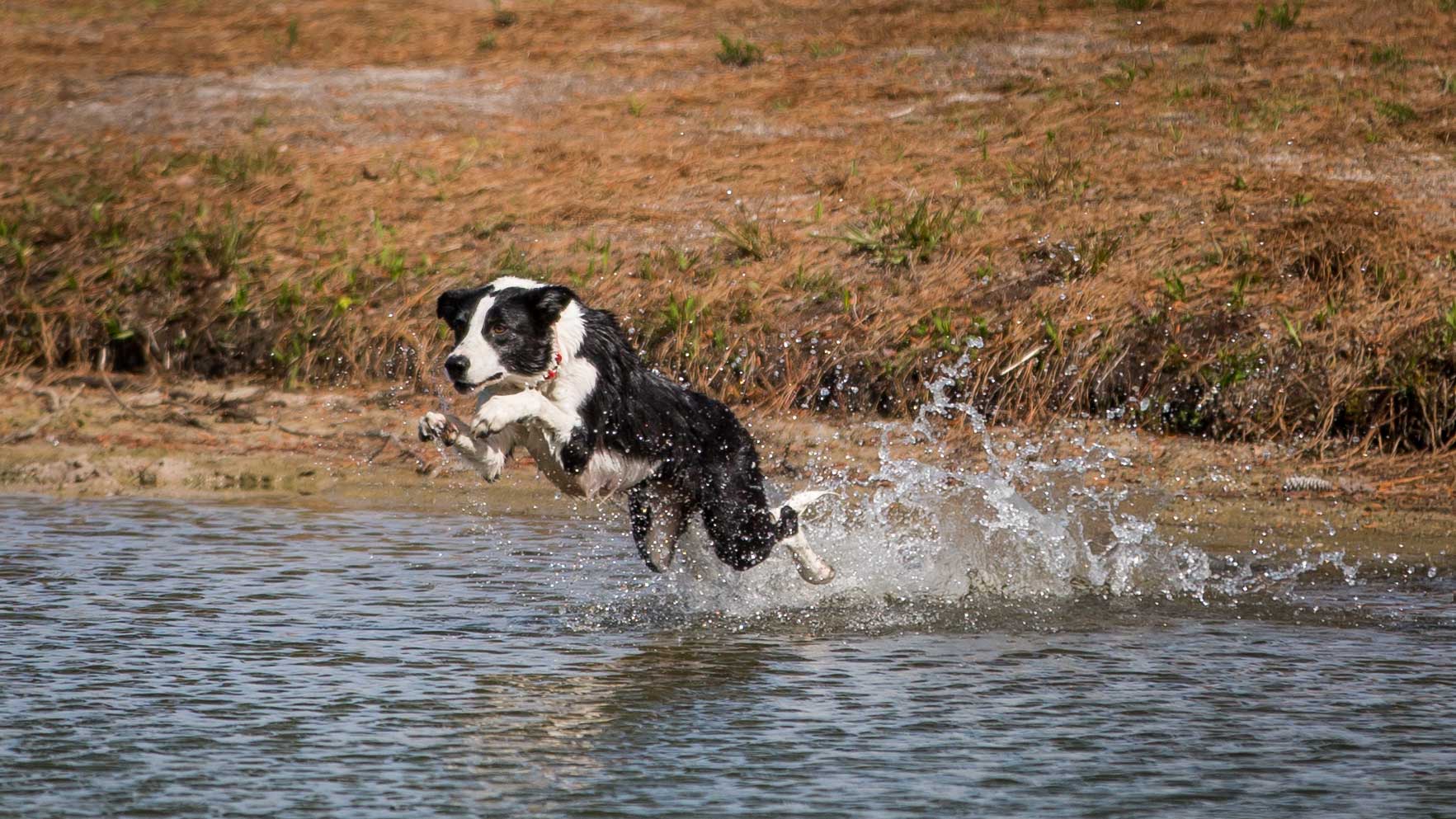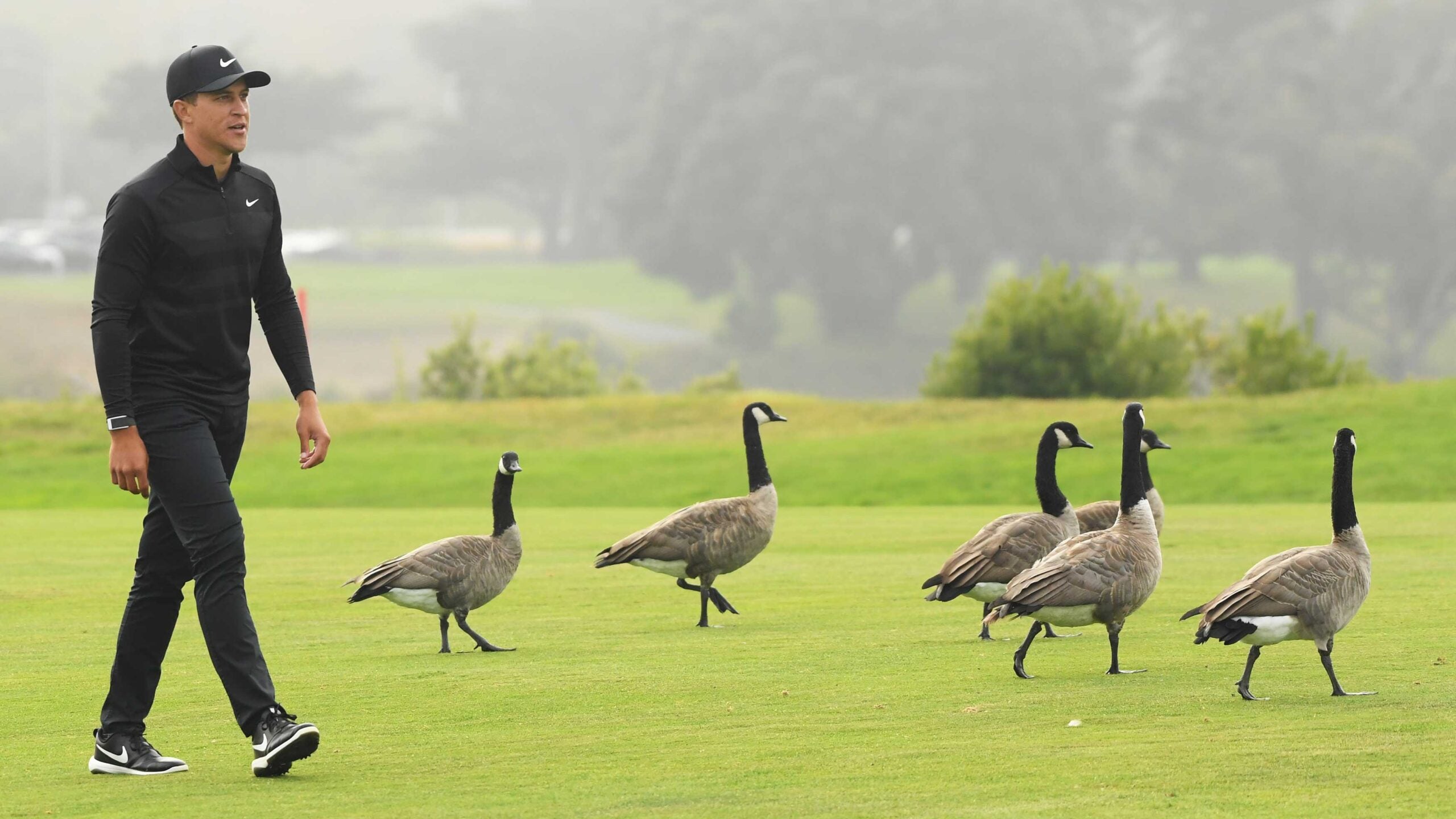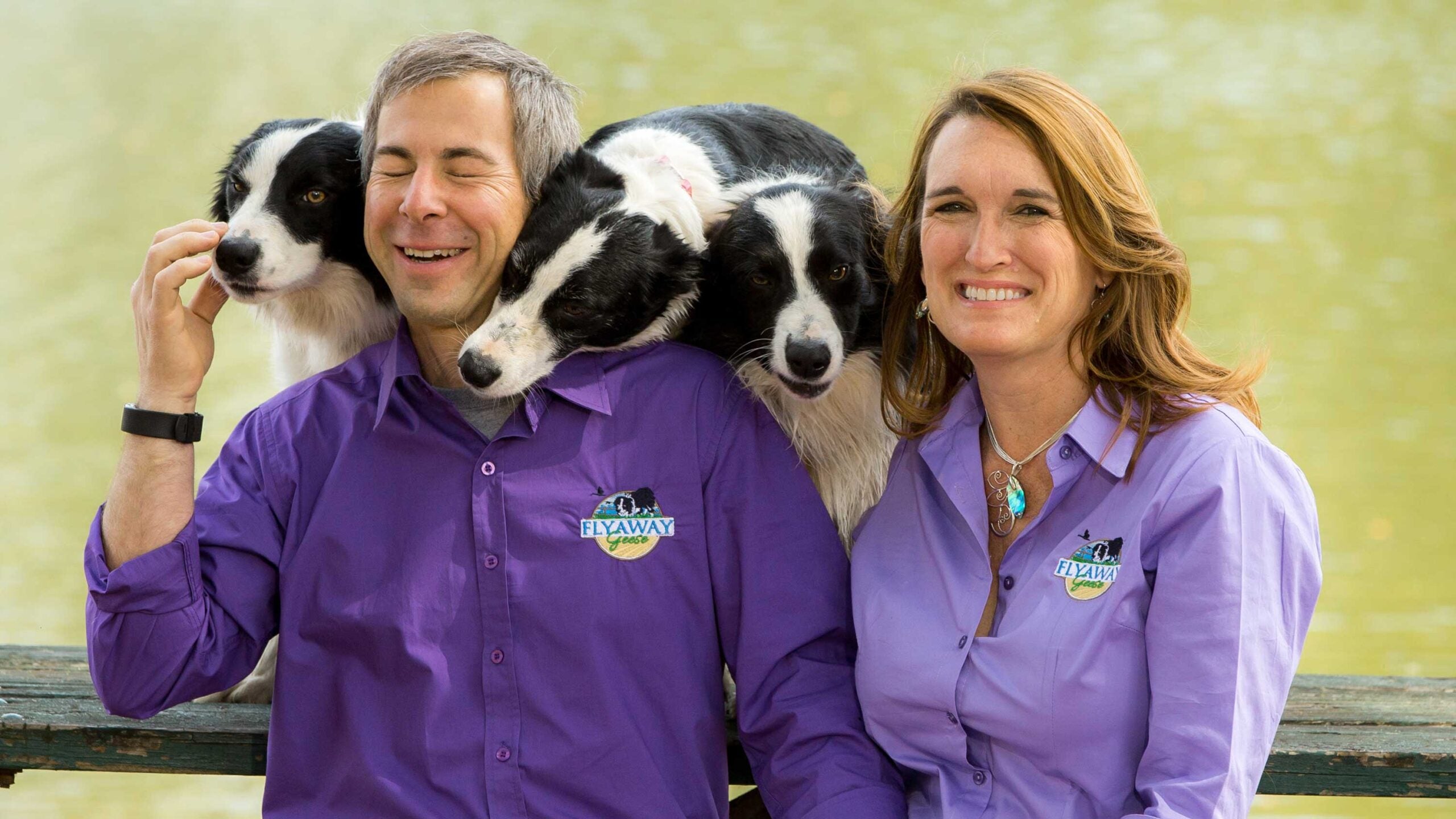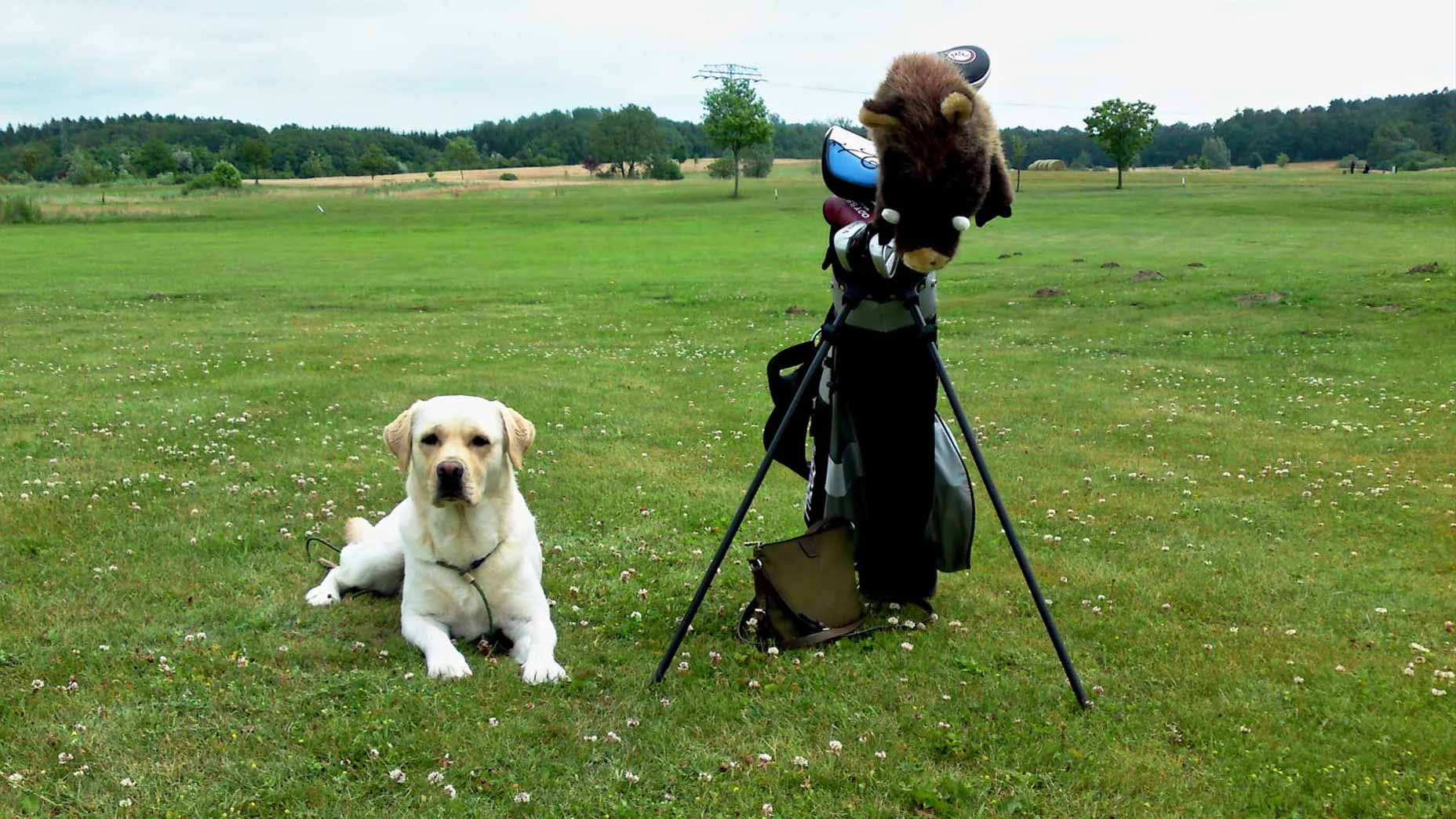In the early 1990s, David Marcks was working as the assistant superintendent at Fairview Country Club, a private course in Connecticut that was not exclusive enough to keep 600 Canada geese off its grounds.
The birds did many things that bad guests do. They tore up turf, ate like gluttons and ― this was the clincher ― relieved themselves abundantly in indiscreet locations.
Ornithological fun fact: The average adult goose produces one-and-a-half pounds of droppings per day.
“It was like playing golf in a litter box,” Marcks says.

Along with his brother, Richard, Fairview’s lead superintendent, Marcks tried all the standard goose-deterrent tricks ― decoys, whistles, air cannons, flares ― to no avail. Then, one day, while browsing in a bookstore, he came across a photograph of a dog, a handsome pup, with black and white markings.
Marcks didn’t know the breed, but he knew that he’d seen its spitting image years before. At a farm in New Jersey, where he and his brother had worked as kids, they’d used a dog just like it to round up cattle.
An idea struck him.
“I figured, If that dog could move a 1,200-pound bull, it could definitely move a 14-pound bird,” Marcks says.
The dog was a Border collie. He and his brother started calling breeders.
“The first 10 or 11 people I talked to told me I was crazy,” Marcks says. “You want a dog to do what?”
He and Richard were ready give up when they found a willing seller, a breeder in Virginia. For $2,000 of the club’s money, they bought Tac, a trained Border collie, and set him loose on Fairview’s fairways. In a matter of weeks, the geese were gone.
I figured, If that dog could move a 1,200-pound bull, it could definitely move a 14-pound bird. David Marcks
That was the good news. The bad news was that Tac had nothing left to do. Idleness does not sit well with Border collies. To keep him occupied, David brought Tac to a nearby course that was overrun with geese and volunteered his services. Problem solved.
Word got out. Marcks started getting inquiries from other clubs: Could they pay him to bring Tac around?
Demand grew to the point where Marcks got a second dog and embraced a second job.
“So now I’m going around on my days off with a couple of Border collies and a big pocket full of cash,” Marcks says. “And I realize, These damn dogs are making more money than I do.”
Within a year, Marcks had given up his Fairview gig and founded Geese Police, a venture that put him on the vanguard of what is now a multi-million-dollar industry.

The Canada goose issues golf faced back then were chicken feed compared to what the game is up against today. Though the big birds aren’t everywhere, they often seem to be, with nesting grounds in all 50 states and a large and growing presence on courses coast to coast.
That trend reflects a rise in their overall population. According to recent waterfowl counts, there are more than 5 million Canada geese in North America (one estimate places the number at upward of 9 million), nearly as many if not more than there have ever been on the continent, and roughly double what there were some 30 years ago, when Marcks and Tac first went to work.
The term Canada goose is a catch-all descriptor for several goose species. It is also something of a misnomer, as millions of Canada geese in this country have never set a webbed foot in the Great White North. They are what are known as “resident” geese. No long, winged migrations for them come winter. Avian homebodies, they stay mostly put year-round, feeding and breeding in environments that suit them. Many of those environments are manufactured: parks, playgrounds, corporate campuses, golf courses. If you build it with grass and water, the birds will come.

“When you think about what golf courses offer in the way of food and a place for reproduction, it’s no wonder geese feel very welcome on them,” says Peter Marra, an ornithologist at Georgetown University and emeritus senior scientist at the Smithsonian Migratory Bird Center. “If you let them into the clubhouse, they’d probably go for a Reuben and an Arnold Palmer, too.”
What’s good for the geese, of course, isn’t always great for golfers. Aside from the mess they leave behind, the birds, when they gather in great enough numbers, can pose public health problems with their bacteria-laden droppings.
They also get aggressive when defending their nests. And while they aren’t likely to injure golfers — mostly, they just hiss and flap their wings — golfers aren’t expected to return the favor. Hunting or harming geese can be punishable with fines or jail time. Addling eggs — a population-control method in which a product, often corn oil, is applied to the eggs to prevent them from hatching — is restricted by permit. Natural predators are few and far between on courses. Of the humane options, that leaves scaring the geese away.
Trouble is, the birds are savvy. Though a cardboard coyote cutout might fool them once, geese soon wise up to such impostors. Firecrackers and air cannons only work until the birds discover that the startling noises are not a threat.
And, besides, what course wants to be ground zero for loud booms, anyway?
Enter a special kind of canine, a breed that shares some bloodlines with the ancient game. Like golf, Border collies trace their origins to Scotland — specifically, a border region with England — where they were developed as herding dogs. Smart, agile and energetic, they proved up to that task, and more. By the early 1900s, sheep farmers in the United States and Canada had enlisted the assistance of Border collies. As ranching life expanded westward, Border collies went westward, too. There weren’t any livestock they couldn’t wrangle. Or, as David Marcks discovered, any birds they couldn’t spook.

To watch them stalk their quarry is to see what makes them so effective, moving in a low, spring-loaded crouch, eyes locked in a steely stare. Though the dogs aren’t out to harm the birds — they’re trained not to lay a paw on them — the geese don’t know that. To them, Border collies look like a grave threat.
“Any dog can chase geese, but no dog can chase geese like a Border collie,” Marcks says. “As far as the birds are concerned, you’ve basically got a predator, like a wolf, an Arctic fox or a coyote. The difference is, it’s a predator you can control.”
Those traits have been the basis of a booming business, and not just for Marcks, who, over the years, has expanded Geese Police into a franchised operation, with 17 offices in 13 states. Though a prominent player, he’s far from alone in the goose-control game.
Just ask Barbara Ray. She’s the Border collie breeder who sold Tac to Fairview Country Club way back when. In the wake of that transaction, nearly three decades ago, Ray took to selling trained dogs to other golf course operators, a trade that wound up turning her a tidy profit.
“(Tac) was like the goose that laid the golden egg for me,” she says.
While Ray has since retreated from any goose-dog dealings to focus on her passion for sheep dog trials (the herding competitions pictured in the movie Babe), one of her former trainers, Rebecca Gibson, has become a leading figure in the field as the founder and co-owner of Fly Away Geese.

From her home base on a farm in North Carolina, Gibson dispatches Border collies to an array of venues around the country ― business plazas, airports, military bases — any place where geese (or other birds) have gotten out of hand. She has earned a reputation as a golf-world go-to, and a benefactor of the game; every year, at the Golf Industry Show, she gifts one of her Border collies to a golf course superintendent.
By Gibson’s estimate, more than 40 of her Border collies are currently working courses in the U.S., and she’s always grooming more to keep up with demand. The job has little letup. As adept as the dogs are at goose-control, not all of the skills come naturally to them. Where a Border collie’s instinct is to round up stock, for instance, bringing the animals back toward its owner, the goal of golf-course work is to chase away the geese. It takes time to teach the dogs that that’s okay.
Their education begins early, during puppy-hood, around a duck-filled pond on Gibson’s farm. Gradually, as the young Border collies start to gain their footing, they are put to apprentice alongside older dogs, watching and learning as they go. By around the age of 2, most are ready for the workforce, and worthy of the price they fetch. Gibson sells them to golf courses for anywhere from $3,500 to $8,000.
9 keys for playing golf with your dogBy: Sean Zak
For that top price, Gibson says, “you’re basically getting a remote-control dog. If you want it to move three steps to the right or left, that’s exactly what it will do.” Not that the other dogs are slackers, either. “They’re all well-trained — more than up to anything a course might need.”
On average, Gibson says, it takes three to four weeks of steady harassment to rid a course of geese, at which point a Border collie morphs into combo role of course mascot and pet. Given their intense and active nature, they require an owner who is up to the task. Compatibility is key. To that end, prior to sealing any deal, Gibson sends perspective buyers a questionnaire that is every bit as thorough as any forms you’d fill out on a dating site.
“You can train a dog to be comfortable with downtime,” Gibson says. “But owners also need to know about Border collies. It’s in their nature — they like to have jobs to do.”
That much was apparent on a recent weekend morning at Corica Park, a municipal facility in Alameda, Calif., that is popular with golfers and geese alike. For months, the birds had been driving management batty, feasting on grass, generating droppings.
For $8,000, ‘you’re basically getting a remote-control dog. If you want it to move three steps to the right or left, that’s exactly what it will do.’ Rebecca Gibson
“It’s been like a smorgasbord for them,” said an exasperated Marc Logan, Corica’s chief operator and lead agronomist.
Like David Marcks at Fairview Country Club years ago, Logan had exhausted an arsenal of options. Flares had failed. The geese had all but cackled at a coyote decoy. As it happened, Logan’s wife, Dee, had a background in dog training. It was she who had reached out to Rebecca Gibson and convinced course management to buy a Border collie from Fly Away Geese: an eager 2-year-old male named Paint.
Now, with the sun up and the fairways filled with golfers, Dee climbed into a golf cart, Paint seated at her side. This was not the dog’s first tour of duty. He’d been on the job for a few days now, and plenty of geese were still hanging around.
Pressing the gas pedal, Dee motored up the 10th hole, a dogleg left par-4 with a retention pond along its outer elbow. At the water’s edge, a gaggle of geese were going about their business.
At Dee’s command, Paint sprang into action, leaping from the cart and scuttling across the fairway in a menacing crouch. A goose, clucking softly, began to squawk. Others soon joined in a panicked, honking chorus as Paint broke into an all-out sprint. He’d nearly reached them when the birds took flight, Paint circling excitedly in their shadows.
“Good boy!” Dee called out.
She shaded her eyes and watched the geese wing off, chaotically at first, then gathering themselves into a V-formation, out to find friendlier confines somewhere else.










